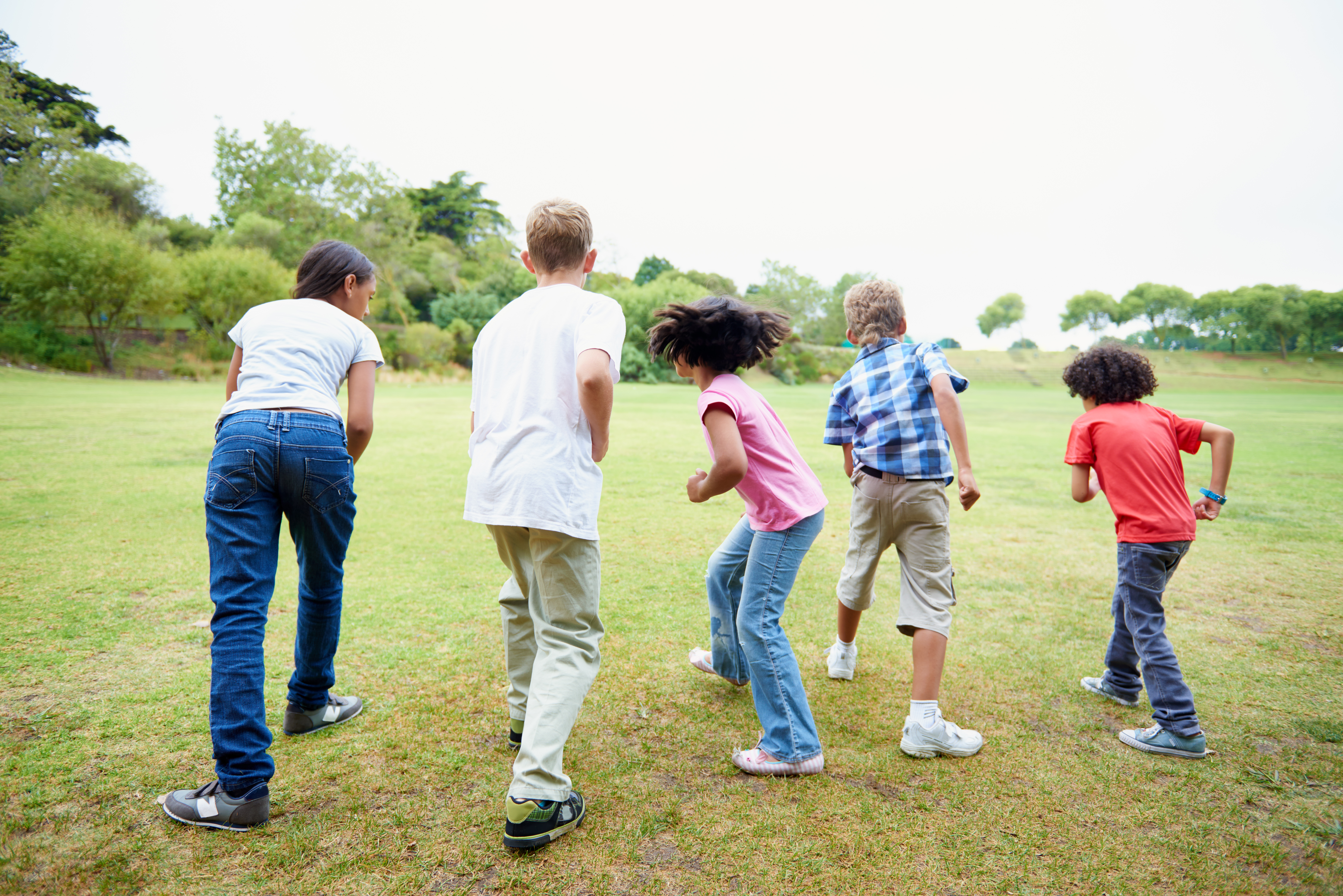Today, fewer children utilize active modes of transportation, with most relying on car rides from their parents or guardians. Most parents cite distance as the reason they transport their children around — but walking a mile daily is enough to increase their overall physical and mental well-being. From a health perspective, walking a mile is perfectly acceptable for school-aged children, and it doesn’t take long for a child to cover that distance.
The average child takes approximately 20 minutes to walk a mile. Most kindergarteners can walk 2.89 miles per hour (4.65 km/h) or a little more than 20 minutes per mile (1.34 m/s). Around the age of 11 and 12, kids walk around 3.1 miles per hour (5 km/h), or 19 minutes and 21 seconds per mile.
This article looks at the average walking speed of children, factors that affect their walking speed, and whether it’s safe for a child to walk a mile. Additionally, we’ll discuss the development of walking speed in infants and toddlers. Read on to learn more.

What Is the Average Walking Speed of Children?
According to a study published in the Journal of Architecture and Planning, the average walking speed of children aged five years old is 1.29 meters per second (2.89 miles per hour) when walking on a flat surface, such as a sidewalk. Speed decreases when walking up and down stairs, equating to roughly 0.60 meters per second (1.34 miles per hour) when ascending an inclined surface and even slower when descending.
Average walking speeds of children between 5 and 12-year-olds are 2.89 and 3.1 miles per hour (4.65 and 5 km/h), respectively. Elementary children walk slower than their middle-school counterparts, averaging 2.52 miles per hour (4.05 km/h), vs. the middle schooler’s 3.2 miles per hour (5.1 km/h).
These significant speed differences likely relate to differences in stride, gait, and consistency of pace.
What Factors Affect a Child’s Walking Speed?
Typically, older children walk faster than younger children, but younger people usually walk faster than seniors.
Factors that affect a child’s walking speed include age, fitness level, whether they’re carrying a load (such as a backpack), and the consistency of their pace. In situations where children walk in groups, children walk at speed equal to or similar to the person leading the group.
Athletic Children Tend To Walk Faster
Athletic children typically walk at greater speeds than their nonathletic counterparts. Children who don’t regularly engage in physical activity experience slower walking speeds due to their likelihood to tire more quickly.
Load Size Affects a Child’s Walking Speed
Carrying a backpack, lunchbox, or other loads also slows a child down. According to a case study posted on Harvard University’s Astrophysics Data System, people carrying loads walk slower than those without baggage. As such, it’s expected that children carrying objects walk slower than average due to the need to adjust their center of gravity. Additionally, the reciprocal arm swing isn’t as easy to maintain when using the arms to carry something.
Surrounding People Impact a Child’s Walking Speed
Walking with slower siblings or friends may significantly reduce a child’s walking speed, increasing the time it takes to walk a mile. Environmental factors like detours or waiting to cross the street also affect how long it takes a child to walk a specific distance.
Leg Length Likely Doesn’t Alter Walking Speed
Interestingly, leg length doesn’t indicate faster or slower walking speeds. Long legs equal greater stride length, but this doesn’t correlate to faster walking (although it does play a role in running and sprinting speeds). Despite longer-legged children taking fewer strides than people with shorter legs, the two can still cover the same distance within the same amount of time.
Can a Child Safely Walk a Mile?
A study conducted by Syracuse University and published in Medicine & Science in Sports & Exercise showed that children in the United States don’t regularly engage in activities involving regular step patterns that require normal walking speeds.
Additionally, the United States Centers for Disease Control noted that the number of children that walk to school has rapidly declined over time. In 1969, approximately 50 percent of school-aged children utilized an active mode of transportation, compared to only 15 percent of children today.
Parents often cite distance as a barrier that prevents their children from walking to school. However, the average distance between school and home for children between the ages of 6 and 12 is a little over roughly 3 ½ miles (5.6 km). To encourage physical activity, parents might consider allowing their children to walk one mile to a designated pick-up spot instead of transporting them the entire way.
Most children can safely walk a mile. In fact, children that walk a mile or more per day are significantly healthier than their peers who do not engage in physical activity. Walking to school has also been shown to reduce stress in children and improve their overall well-being.
Walking Benefits Children’s Physical Health
A University of Buffalo study used simulations to determine the effects of walking on children. The study found that simulated walks to school resulted in lower blood pressure and heart rate among school children versus those who’d received a simulated ride in a vehicle.
Due to the rapid rise in childhood obesity, the Department of Transportation organized an effort to overcome active transportation barriers for children. The Safe Routes to School Initiative seeks to increase the number of students walking or riding a bicycle to school (or using another active mode of transportation).
Walking Development in Babies and Toddlers
The majority of children begin walking independently between 8 and 18 months old.
One-year-olds tend to walk much slower than their older toddler peers. They typically keep their feet flat on the ground and lack the reciprocal arm swing seen in older children. Additionally, they remain cautious of their movements due to an uneven gait.
However, by the age of 1 ½, most children begin striking their heels on the ground as they walk, and the arm swing develops. As their legs grow in size, their step length increases, and they utilize a greater range of motion in their hips. The speed in toddlers rapidly increases from the start of walking to around 3 ½ years old.
Most parents can attest to this, as toddlers move rather quickly relative to their small stature.
Conclusion
With a consistent pace, the average child can cover a mile in about twenty minutes. A one-mile walk does not negatively impact most healthy children. Instead, it benefits them both physically and mentally.
The drastic reduction in children walking to and from school and other destinations may contribute to childhood obesity. Parents must encourage their children to get active, and walking is a beneficial physical activity that most school-aged children can safely engage in.
Sources
- Journal of Architecture and Planning: WALKING SPEED OF CHILDREN BY AGE UNDER THE LEAD OF NURSERY SCHOOL TEACHER ON A SIDEWALK AND OVERPASS BRIDGE STAIRS DURING AN URBAN EVACUATION DRILL
- Journal of Pediatric Physical Therapy: Expectations for Walking Speeds: Standards for Students in Elementary Schools
- Public Library of Science: Association between Walking Speed and Age in Healthy, Free-Living Individuals Using Mobile Accelerometry—A Cross-Sectional Study
- Harvard University – Astrophysics Data System: A Case Study on the Walking Speeds of Pedestrians at the Bus Terminal
- International Society of Posture & Gait Research: Maturation of Arm Swing During Walking
- Sports Rec: Length of Legs and Walking Speed
- Syracuse University: Cadence Patterns and Peak Cadence in US Children and Adolescents: NHANES, 2005-2006
- United States Centers for Disease Control: Barriers to Walking to or From School
- Oak Ridge National Laboratory: Travel to School: The Distance Factor (PDF)
- University of Buffalo: Walking to School Could Reduce Stress
- United States Centers for Disease Control: Childhood Obesity Facts
- United States Department of Transportation: Safe Routes to School Programs
- Grow by WebMD: When Does a Baby Start Walking?
